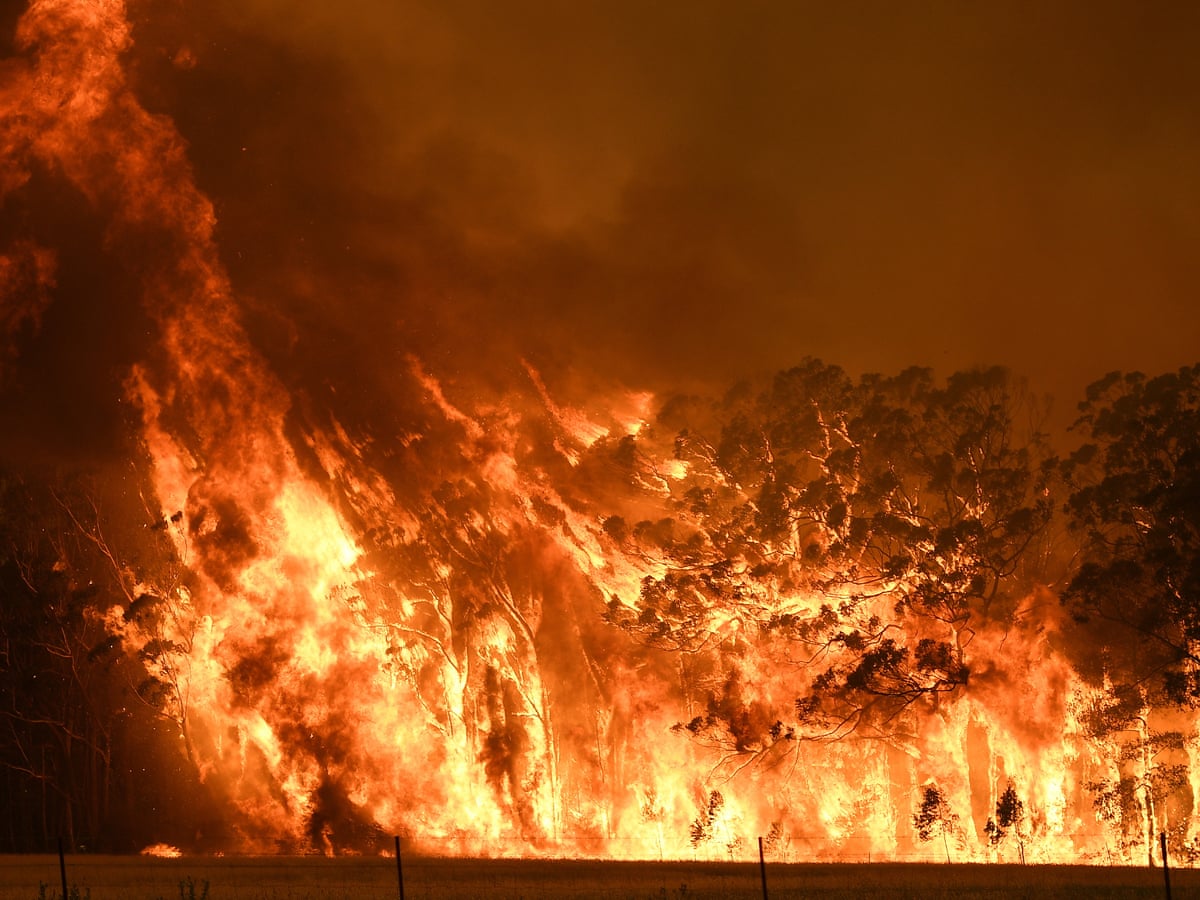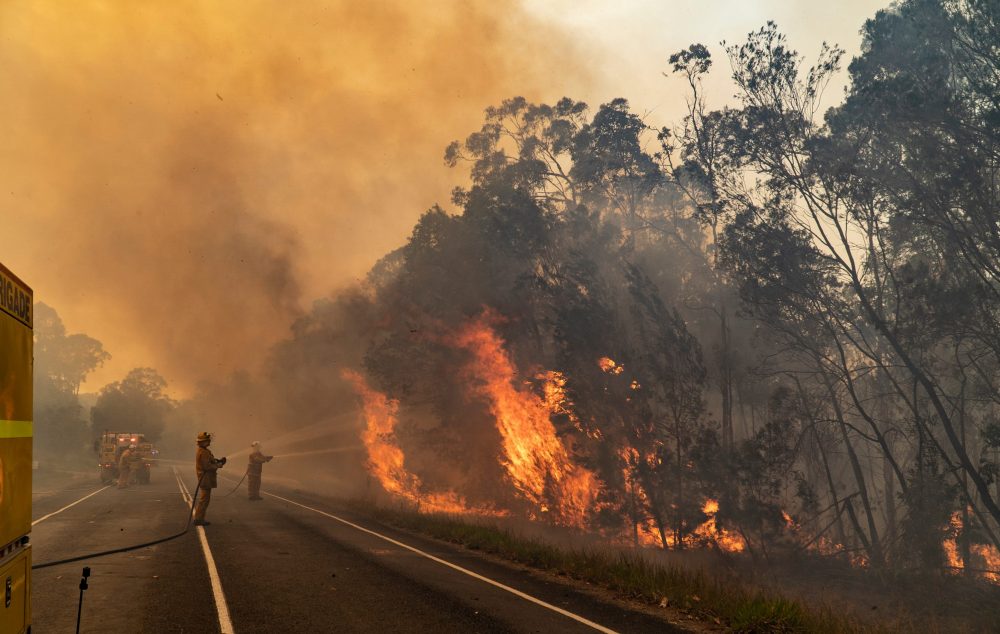Beyond Compliance: Enhancing Residential Or Commercial Property Security with an In-depth BAL Report
Beyond Compliance: Enhancing Residential Or Commercial Property Security with an In-depth BAL Report
Blog Article
Expert Suggestions on Bushfire Administration for Enhanced Fire Protection
In the realm of bushfire administration, the relevance of expert recommendations can not be overemphasized. From understanding the nuances of bushfire behavior to executing functional actions such as firebreaks and defensible rooms, there exists a wide range of understanding that can dramatically enhance fire security initiatives.
Recognizing Bushfire Behavior
To successfully reduce the influence and manage of bushfires, it is important to have a detailed understanding of bushfire actions. Bushfires are complex natural phenomena influenced by different aspects such as weather conditions, topography, gas lots, and human tasks. Understanding exactly how these components engage is important in anticipating the behavior of a bushfire, enabling for better preparation and feedback techniques.
One trick element of bushfire behavior is fire spread. By researching past fire occurrences and evaluating fire patterns, specialists can expect how a bushfire may progress under specific conditions.
Moreover, understanding ember strike, identifying, and fire whirls is vital in grasping the complete extent of bushfire habits. Embers can travel cross countries ahead of the fire front, stiring up spot fires and posturing a considerable threat to residential or commercial properties. Fire tries, on the various other hand, can create erratic fire behavior, making the fire management process also much more difficult. By diving into these ins and outs of bushfire behavior, authorities can improve their readiness and response abilities, eventually reducing the influence of these destructive events.
Carrying Out Firebreaks and Defensible Spaces
Understanding bushfire habits is foundational for efficiently executing firebreaks and developing defensible areas to boost fire security. Firebreaks are strategically put voids in greenery or other combustible products that work as barriers to quit the progression or slow of a bushfire. These can be all-natural features like roads or rivers, or synthetic clearings up. Maintaining these firebreaks with normal clearing up of debris and greenery is vital to ensure their performance throughout a bushfire event.

Correctly carrying out firebreaks and defensible rooms calls for meticulous planning, regular maintenance, and neighborhood collaboration to make certain the highest possible level of fire security for buildings and lives in bushfire-prone areas.
Making Use Of Early Caution Equipments
Deploying innovative very early warning systems is crucial for prompt discovery and notifying of possible bushfire threats. By utilizing innovative innovations such as satellite surveillance, climate sensors, and thermal imaging, authorities can properly monitor fire-prone locations and discover ignition resources at the earliest phases. These systems can provide real-time data on fire instructions, intensity, and behavior, enabling punctual decision-making and rapid deployment of firefighting resources to the impacted areas.
Very early warning systems additionally play an important role in signaling locals and neighborhoods about impending bushfire threats. With automated sirens, text signals, call, and social media alerts, people can be quickly educated concerning evacuation orders, risk-free sanctuary areas, and emergency procedures. This aggressive technique not just saves lives however also decreases residential property damage by making sure that people have enough time to leave and shield their homes.
Developing Evacuation Strategies
Efficient discharge strategies are important for making sure the safety of locals in bushfire-prone areas. Establishing well-balanced discharge approaches is crucial in reducing the dangers presented by bushfires and guarding human life. These strategies need to be thorough, taking into account different aspects such as the topography of the location, the Check This Out thickness of plant life, and the most likely rate and instructions of the fire's spread.
When creating evacuation plans, it is crucial to develop clear emptying paths and assembly points where citizens can collect securely. These routes need to be frequently kept to make certain availability during emergency situations. Furthermore, interaction methods have to remain in area to alert citizens of unavoidable danger and provide clear instructions on emptying treatments.
Cooperation in between neighborhood authorities, emergency services, and community participants is necessary in establishing efficient emptying strategies. When a bushfire threatens the area, regular drills and exercises need to be conducted to acquaint locals with the treatments and guarantee a swift and arranged evacuation (BAL Report). By focusing on the development of durable evacuation plans, communities can improve their strength to bushfire emergencies and minimize the possible effect on lives and homes

Engaging in Community Preparedness
In the realm you can try here of bushfire administration, promoting neighborhood readiness plays an essential role in strengthening the durability of locals living in risky areas. Taking part in neighborhood preparedness entails informing residents on bushfire threats, promoting fire safety and security methods, and developing emergency situation plans jointly. By actively entailing the community in readiness efforts, people become extra notified and encouraged to take positive measures to secure their lives and homes throughout bushfire events.
Area preparedness efforts often consist of performing fire drills, establishing interaction networks, and arranging training sessions on fire reductions techniques. Urging collaboration among next-door neighbors to create a cohesive assistance system can considerably enhance the overall readiness degree of a neighborhood. When residents are educated and outfitted to respond effectively to bushfires, the likelihood of minimizing damage and making certain security boosts significantly.
Verdict
Finally, effective bushfire administration calls for a detailed understanding of fire actions, the execution of firebreaks and defensible rooms, the usage of early caution systems, the development of discharge plans, and neighborhood involvement in readiness efforts. By including these strategies, communities can boost their fire protection measures and this contact form decrease the impact of bushfires on both building and lives. BAL Assessment. It is crucial for all stakeholders to collaborate to create a safer environment despite this natural disaster
To effectively manage and mitigate the impact of bushfires, it is essential to have a comprehensive understanding of bushfire behavior. By studying previous fire incidents and analyzing fire patterns, experts can prepare for just how a bushfire could advance under particular problems.Comprehending bushfire habits is fundamental for efficiently executing firebreaks and producing defensible spaces to boost fire security. Involving in neighborhood readiness includes educating citizens on bushfire threats, promoting fire security methods, and creating emergency strategies collectively.In verdict, efficient bushfire management needs a comprehensive understanding of fire habits, the execution of firebreaks and defensible areas, the application of early warning systems, the growth of evacuation strategies, and area interaction in readiness initiatives.
Report this page